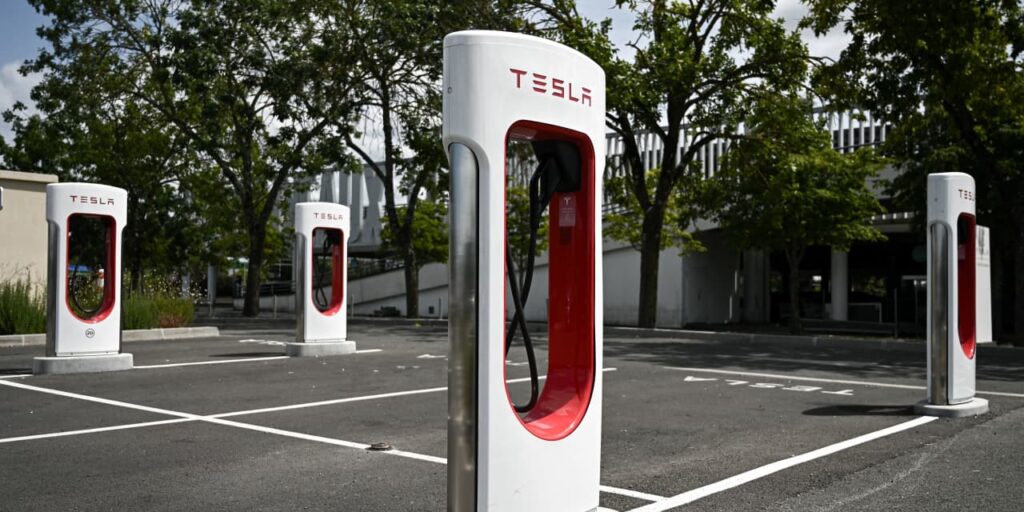Financial filings with the Securities and Exchange Commission can be long, a little dry, and quite extraneous. For example, American companies include mine-safety disclosures even if they don’t operate mines.
Still, it is always a good idea to read filings. They always contain more detail than what investors see in a quarterly earnings report. That’s especially true for
Tesla
(ticker: TSLA). Almost nothing associated with this company, or stock, is boring.
Monday Tesla (ticker: TSLA) filed its quarterly report, on a form 10-Q. It includes details about legal investigations, warranties, and other items that give investors a little more context to the recent disappointing quarter.
On the legal front, there was a new disclosure about probes by the Justice Department related to self-driving features, management benefits, vehicle range, and personnel decisions. Investors know about a lot of this already. The benefits likely related to a potential house for Elon Musk that wasn’t built. Several entities have looked into self-driving feature marketing and performance. Vehicle range typically is related to owners getting less range per charge than is listed on marketing materials. That issue impacts all EVs and can be affected by weather, driving conditions, and driving style.
“To our knowledge, no government agency in any ongoing investigation has concluded that any wrongdoing occurred,” reads part of the 10-Q. “We cannot predict the outcome or impact of any ongoing matters. ”
Legal matters don’t typically affect Tesla’s stock all that much. Outcomes that impact the company tend to be measured in tens of millions of dollars such as when Tesla paid a $20 million fine related to the 2018 “funding secured” tweet by Elon Musk.
Financial results impact the stock. Tesla, this past Wednesday, reported weaker-than-expected third-quarter results. Operating-profit margins fell below 8%, down almost 10 percentage points from the same time last year. Wall Street was looking for closer to 9%, according to FactSet. Shares fell more than 9% in response.
Lower pricing has led to lower profitability. The good news for investors is it’s also led to lower inventories. Fewer cars to sell lessens the need to keep cutting prices.
Lower pricing isn’t the only reason profits are down. Tesla is spending more on R&D, funding new products, its autonomous driving programs, and Optimus, the artificial-intelligence-trained humanoid robot that CEO Musk wants to use to replace humans doing repetitive tasks. R&D as a percentage of automotive sales came in at 5.9%, up from less than 4% a year ago.
Warranty spending is typically included in automotive quarterly reports. Spending and provisions for warranties are up. Nothing is alarming about that. It’s a sign that inflation impacts everyone. Fixing cars is getting more expensive at the same time Tesla is cutting prices for its new vehicles.
Tesla also said capital spending on plants and equipment should exceed $9 billion in 2023, and average $7 billion to $9 billion a year in 2024 and 2025. Wall Street is modeling just below $9 billion in 2023, but above $9 billion in 2024 and $10 billion in 2025.
That is money for expanding plants in Germany and Texas, as well as a new plant in Mexico. Over three years, Tesla’s guidance is a little lower than the street. Spending trends are as expected.
Most of the extra details in the quarterly report reiterate that the current business environment is tough. Higher interest rates are pressuring prices for cars, which are typically purchased with debt. And lower prices mean lower profits. Investors will have to brace for these types of trends until rates start falling and the economy is a little stronger.
As for mine-safety disclosures, Tesla reported “not applicable.’
Tesla stock was up 1.4% at just under $215 a share. The
S&P 500
and
Nasdaq Composite
were up 0.6% and 1.1%, respectively.
Write to Al Root at [email protected]
Read the full article here



